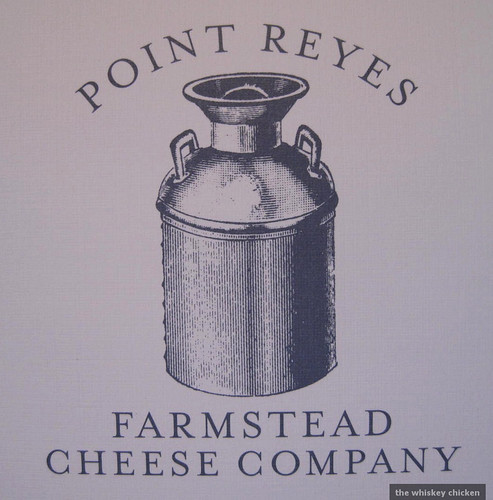I can safely say that receiving cheese in the mail is just about one of the coolest things that can happen to a cheese geek like me. Why did FedEx send me a chunk of cheese you ask? Well, after reading this, submitting an application and an essay, then waiting patiently, I was chosen to be part of a cheese tasting panel for Culture Magazine to help develop a new cheese for the world famous Point Reyes Dairy in California. I spend most waking moments surrounded by cheese, whether it be cheese monger by day or cheese maker by night in my messy and cluttered kitchen, so I'm sure you can imagine my ridiculous amount of excitement. To have the opportunity to try a brand new cheese that is unavailable to the general public is nothing short of thrilling.
Upon returning from work one day, I was greeted by a small white box at my door step. Dropping everything, I opened my coveted package, and inside was an unassuming silver foil wrapped wedge of blue cheese. Not wanting to rush tastiness, I let it sit out for about an hour to come to room temperature. After long moments of pacing and intense staring, it was ready for unveiling.
 |
| Mystery Blue |
First, I took note of the aroma. It was not overpowering at all as some blues can be. Lovely earthiness, wet leaves, and damp cellar. Next, I studied it's appearance. It looked very smooth, dense, and creamy, my favorite style of blue. The blue veining was beautiful, bright, and even, and the natural rind was pale and wrinkled. All good signs.
Trying my best not to shovel half of the wedge into my mouth at once, I took a small piece and examined the texture, then the taste. I was actually quite surprised by the texture as it was not what I had expected. The paste was very light and springy and not as dense as I had hoped for. As it got closer to the rind, the texture did get closer to what I was wanting. It was also very granular, but did crumble well. The taste was complex and varied, from milky and almost bread dough in the center, to sweet, nutty, and very earthy towards the rind. Even the rind itself was chewy and pleasant.
Overall I would say that Mystery Blue is an excellent cheese that I could easily see being paired with a rich Oatmeal Stout or Barley Wine. After my "official" tasting, I enjoyed a slice of raisin bread and toasted walnuts with the rest. If I were to cook with it (which I did not as it was consumed far too quickly) I would most certainly melt it over a grilled steak, or crumble it into a wheat berry salad.
I am eagerly awaiting the next assignment.








